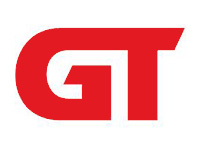
GT Advanced Technologies, in a document made public last Friday, alleged that it “incurred losses … due to Apple’s inordinate control over GTAT’s liquidity, operations (including control over product specifications), and decision making.”
The U.S. Bankruptcy Court of New Hampshire unsealed the document, after GTAT initiated bankruptcy proceedings Oct. 6.
In the document, GTAT CEO Daniel W. Squiller accuses Apple of using a “bait and switch” strategy in its dealings with the company. GTAT is a fabricator of sapphire, a clear crystal that’s harder than glass and very resistant to scratching.
Apple’s “bait” was an offer to buy 2,600 sapphire-growing furnaces from GTAT and have GTAT operate them for Apple to produce sapphire. During negotiations that dragged on for months, Apple changed its position and instead offered a loan to GTAT to buy the furnaces to grow the sapphire.
When GTAT balked at the new proposed arrangement, Apple told the sapphire maker it should “not waste its time” trying to negotiate because “Apple does not negotiate with its suppliers.”
Apple also told GTAT, according to Squiller’s declaration, that the sapphire maker had to accept all material terms laid out by Apple or the deal was off.
“Put on your big boy pants and accept the agreement,” Apple allegedly told GTAT.
Heads or Tails, Apple Wins
Squiller’s declaration cites numerous ways Apple scotched GTAT operations. For example, after warnings about the threat to production caused by unreliable power, Apple vetoed GTAT’s power backup proposal. Since it came online, the Mesa, Ariz., facility where GTAT is producing sapphire for Apple has lost US$10 million due to power outages, according to Squiller.
Squiller also complained that Apple forced GTAT to use tools that prevented it from hitting its production and cost targets. One such tool cited by Squiller was specified to cut sapphire boules in 3.6 hours. In reality, it took 20 hours to do the task.
“When GTAT initially entered into negotiations to sell sapphire furnaces to Apple, it had no sense that this relationship would become a ‘heads I win, tails you lose’ proposition for Apple,” Squiller declared.
“But,” he added, “having borrowed hundreds of millions of dollars to pay for the components of more than 2,036 sapphire furnaces, GTAT was essentially powerless to stop Apple’s control, regardless of whether Apple had a contractual right to exercise control not.”
GTAT declined our request for further comment for this story.
Apple, too, declined to comment. However, a statement it filed with the court in an effort to prevent Squiller’s declaration from being made public, maintains that it “contains extensive unnecessary scandalous and defamatory statements about Apple’s alleged intent, motives and business tactics.”
Apple acknowledged that the discussion in the declaration of the relationship between Apple and GTAT, and its failure to produce sapphire in the quantities and quality required by its agreement with Apple were relevant to the case.
However, “many of the statements [in the declaration] about Apple are gratuitous, false and wholly irrelevant,” Apple maintained.
Too Much to Chew
Apple is known in the industry as a tough negotiator, but in this case, GTAT may have jumped into the deep end of the pool without first learning to swim.
“GT Advanced bit off more than it could chew,” said Pavel Molchanov, the senior vice president for energy equity research at Raymond James & Associates.
“GT Advanced tried to start producing sapphire with zero experience in having done so in the past for the largest tech company in the world,” he told the E-Commerce Times.
“GT had experience in making equipment used to make sapphire. It never operated a factory for making sapphire. This was a brand new experience for them,” Molchanov said.
“Apple, not surprisingly, has very high standards for its suppliers,” he added, “so GT was unable to meet those very high standards. I suspect it had something to do with its lack of experience in making sapphire.”
Many of GTAT’s complaints about Apple smack of “sour grapes,” noted Patrick Moorhead, founder and principal analyst with Moor Insights and Strategy.
“Apple pushed them hard, like they push all their suppliers, but it’s not like Apple had a gun to GTAT’s head,” he told the E-Commerce Times.
“They didn’t force them to sign a deal,” Moorhead said. “They didn’t force them to go from an equipment manufacturer to a service provider.”
Whether GTAT stays in business or not, Apple will continue to use sapphire in its mobile devices. The question is, can the crystal be used in displays larger than the size of a watch face?
“When Apple was approaching companies to make a sapphire display, several of them didn’t think it was possible or didn’t want to invest in it,” said Jim McGregor, founder and principal analyst at Tirias Research.
“Whether this bankruptcy puts a damper on it permanently or for the short term will be hard to determine,” he told the E-Commerce Times, “but it’s definitely a setback for that technology being used as a display solution.”












































Social Media
See all Social Media